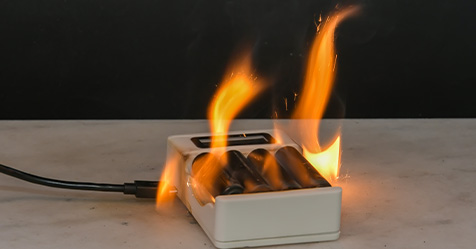Two ways companies can remain competitive in a tightening marketplace is to control or reduce costs.
Usually when a business owner wants to make more money, the first thing that comes to mind is to raise rates or send an increase notice to existing customers. However, anytime you do this, you run the risk of a customer responding with a notice of their own, specifically a cancellation notice or one that says they are putting the account out to bid, neither of which is good news for you nor what you had in mind.
If you want to make more money, a much safer approach is to take a look at the costs that are in your control. If an analysis of your costs and pricing indicates an increase is needed and you can’t live without it, then by all means, go for it. Just be prepared to deal with the unintended consequences of your actions.
Outline the Options
Let’s take a look at the options you have when it comes to holding the line or reducing your costs in such a way that quality and service do not suffer, with the end result being more money in the profit column and your pocket.
First off, to complete an accurate analysis, you must know your costs, and I don’t mean a gut feeling that you are making money. You need a factual and detailed spreadsheet that lists all the costs encountered in your business and in each account.
Costs are generally categorized in at least four major categories: labor, supplies, overhead, and profit. In a service business, labor is always the largest cost. Most cleaning companies figure that 55 to 70 percent of costs will be labor related, which includes wages, taxes, and benefits. Labor is where the most emphasis must be placed when it comes to reducing or holding the line on costs.
While we are here, let’s take a look at the other costs:
Supplies, which could include paper and plastics, chemicals, equipment, and expendable items like mop heads and rags, normally account for 4 to 10 percent of costs.
Overhead, depending on what you include in this category, normally runs anywhere from 10 to 20 percent of costs.
Profit can run anywhere from 1 or 2 percent to the sky’s the limit. However, realistically, most companies would like to aim for 10 to 40 percent on regular work and considerably higher (60 to 100 percent or more) on extra services outside the regular scope of work and one-time projects for noncustomers. The basic concept: The larger the account, the lower the profit percentage.
Keep in mind these are ballpark numbers and can vary considerably depending on how you categorize each expense in your business. Additionally, when looking to increase profits, you need to look at every cost, so don’t overlook supplies, even though their percentage is lower than labor. Consider reducing the number of chemicals to three or four products, and using some type of automated dilution system to eliminate overuse and waste due to improper dispensing of concentrates.
When it comes to reducing labor, consider the following:
- You don’t have to know how to do this when you start the process; however, you are capable of finding ways to improve the process and reduce costs without a loss of quality or service. Attitude and a willingness to set goals and take action are the most important elements of any process improvement project.
- Cut the work shift by one hour per day.
- Streamline or stretch out task frequencies that take a lot of time.
- Use more productive equipment, such as a backpack vacuum versus an upright and an autoscrubber versus a mop and pail for hard floors.
- Develop written assignment schedules for each run or work area so employees know how long each area or task should take to complete.
- Involve your staff in finding efficiencies, and reward them with incentives or cash.
- Reduce labor times by a set percentage across the board.
- Use direct deposit for payroll versus issuing checks.
- Get competitive bids on services that are costly and low profit for you, such as carpet cleaning, hard floor care, window washing, pressure washing, and landscaping.
- Look for add-on services that you can provide without extra staff.
- Use interim cleaning processes for some or all carpeted areas, and reduce the frequency of deep or wet cleaning.
- Look at new technology to reduce or eliminate stripping and refinishing of hard floors. Nano coatings and treatments along with the use of diamond impregnated floor pads generally reduce floor care costs by 50 percent or more.
- Implement a light and heavy cleaning schedule for most or all areas.
- Talk to your local sanitary supply distributor to see what cost-saving recommendations they may be able to provide.
- Search the Internet for cost-cutting ideas.
- Watch employees work to see how you can reduce wasted time, motions, and tasks.
Generally, if you set a goal of holding the line on cost, and involve management as well as production staff in the process, you will identify a number of things that will help achieve or at least make considerable progress toward the goals you have established for cost reduction. Remember: Your goal is to hold the line on costs or reduce them without sacrificing quality or service. This is a worthwhile and achievable goal. Keep a positive, can-do attitude and you’ll be surprised what you can accomplish.
Keep it clean out there.




